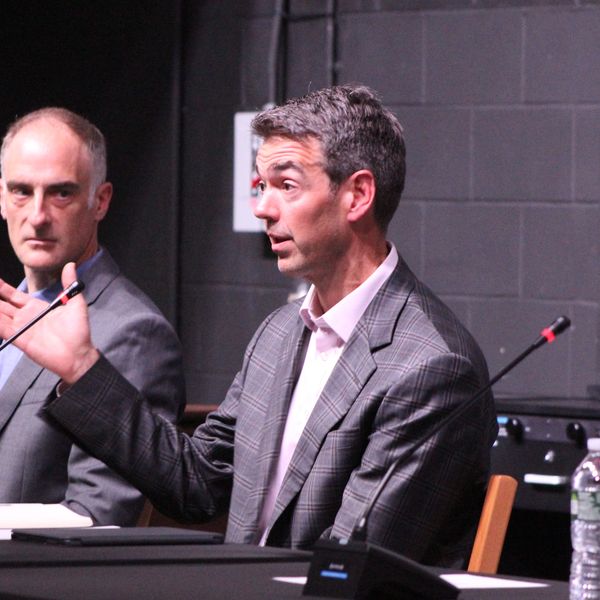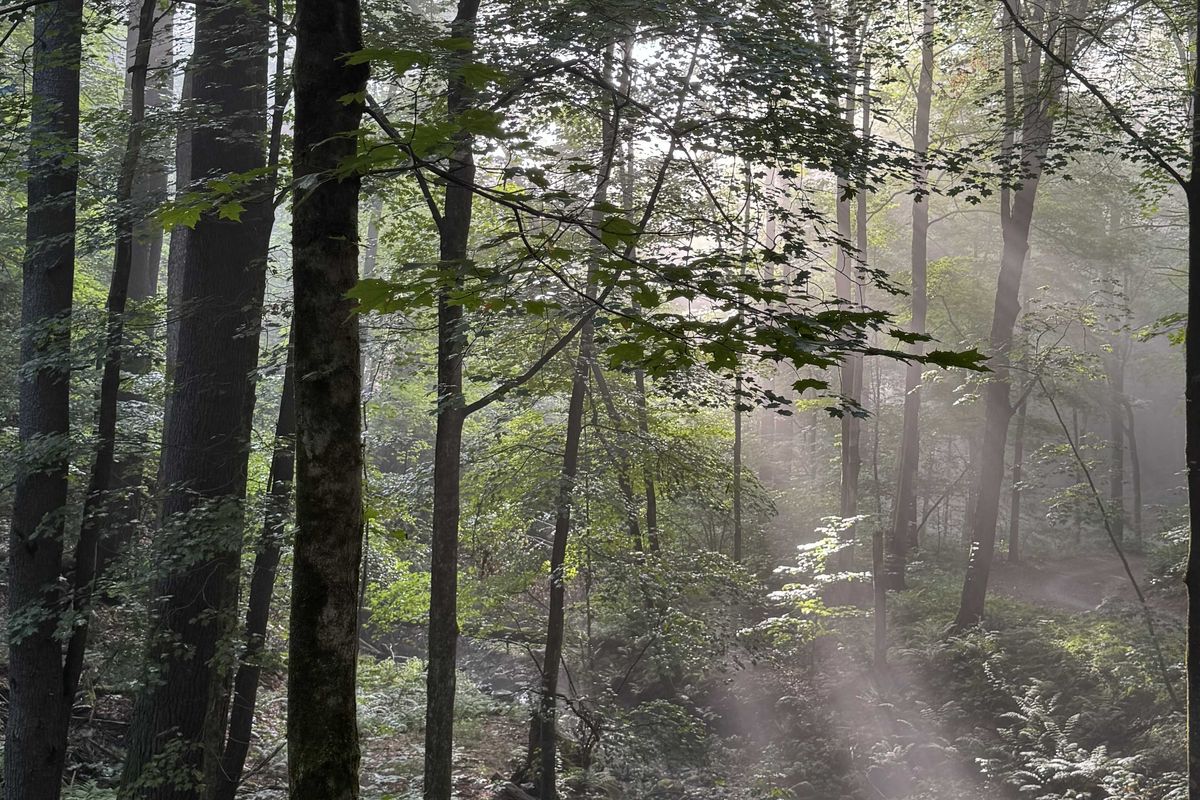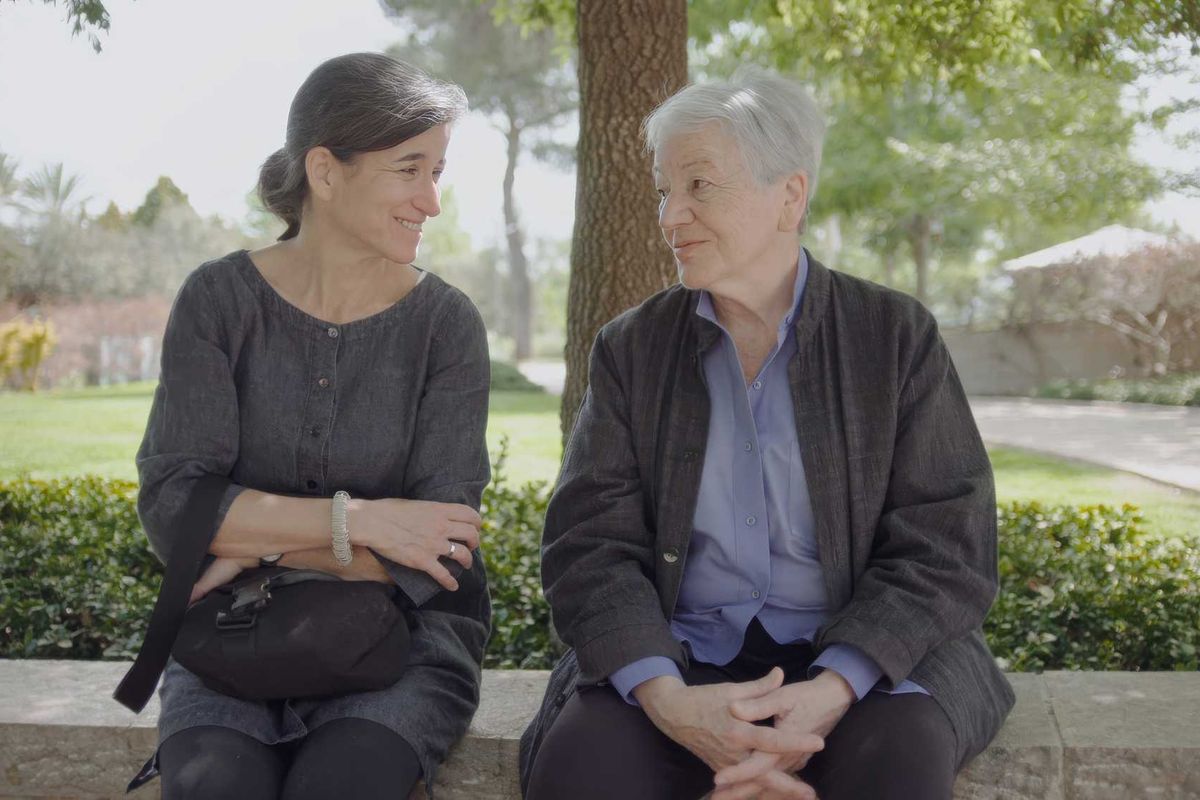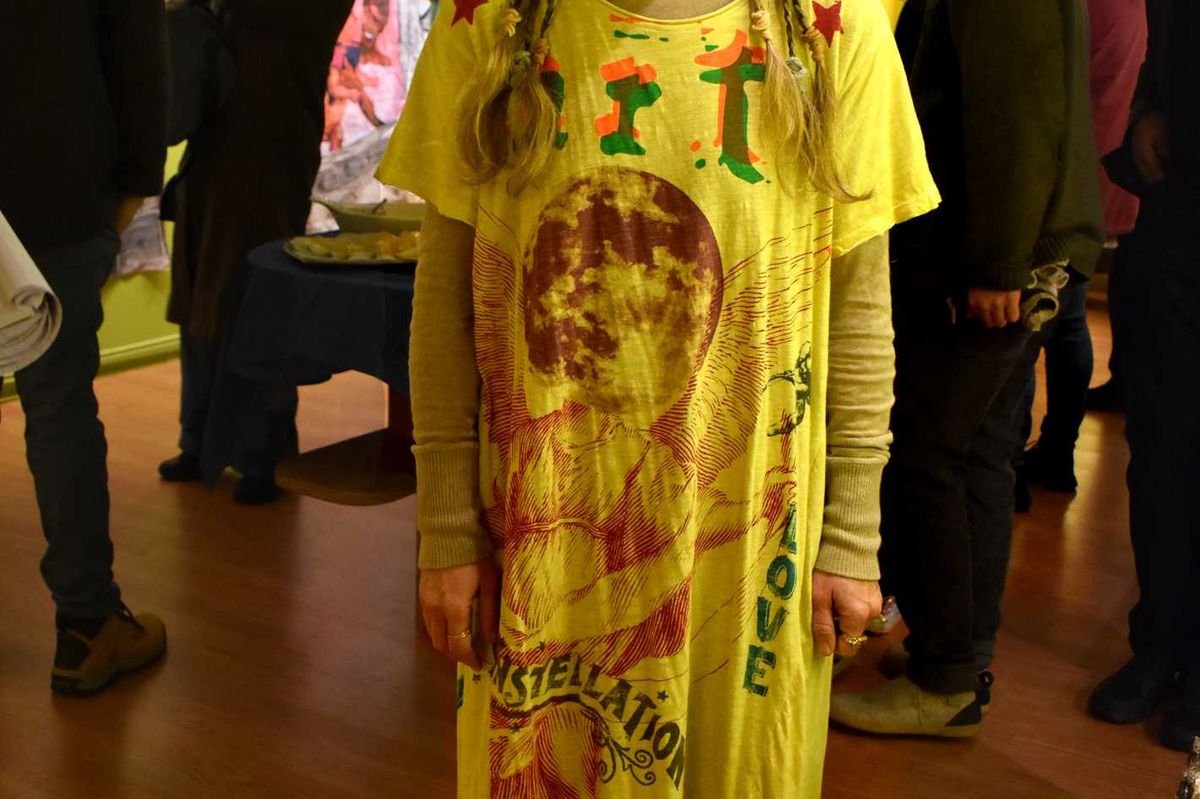Latest News
The trouble in the sugar maples
Dec 03, 2025
A stand of trees in the woods.
Dee Salomon
Did you notice that some sugar maples lost their leaves far earlier this fall than others, missing out on the color parade? The leaves wilted from dull yellow to brown in August before falling off in early September. Where we live, it has happened for several years to a few older maples near the house.
I called two arborists to get as accurate a diagnosis as possible by phone and received two opinions on the issue, both involving fungal pathogens. Skip Kosciusko, a West Cornwall arborist, diagnosed the problem as verticillium wilt, which he says has reached pandemic levels among the area’s sugar maples. “It looks like we have climate conditions that prevent the really cold air from settling in the winter. Cold is helpful in killing the fungus deep inside the tree.” Verticillium wilt enters through the roots and blocks the tree’s vascular system, preventing water from reaching the leaves. It will most often kill the tree, especially young or poorly maintained ones.
Chris Roddick, formerly head arborist at the Brooklyn Botanic Garden, blames anthracnose. You may be familiar with the way anthracnose affects sycamore trees, a type of maple. Infected sycamores lose their first set of leaves in early spring, after which another set grows back. In the case of sugar maples infected with anthracnose, the leaves fall in August — about six weeks early — and they do not grow back until the following spring. We don’t yet know what this shorter life cycle will mean for the long-term viability of infected trees.
Skip has been treating infected sugar maples with a product called Kphite, which he describes as a salt from the minerals potassium and phosphate, known as phosphonate. He has found that it works well on beech trees, too, but he does not claim it is a cure. Rather, it bolsters trees’ natural defense mechanisms and their ability to deal with fungal infection. This product is available only to commercial entities, so homeowners need an arborist for its application.
Chris does not use any fertilizers on trees aside from compost. He is concerned about the long-term effects and unintended consequences of chemicals — even mineral supplements — that can leach into the water supply. He is “okay” with trees dying, and he’s “not doing nothing”; instead of applying chemicals, he is planting other species. His approach encourages a diversity of native plants so he can see what thrives in this new environment.
“Understanding disease pressures in plants is difficult. We often isolate an individual maple tree and see what happens. It’s different in the woods or for a stand of trees — here we have a system. If you manipulate one, you have consequences for the others. We think there are things to be done; we just don’t know what.” What we do know: fungi are quickly adapting to a warming climate, and changes in precipitation patterns may also favor fungal spread to trees.
As with humans, plants require minerals for healthy functioning. Humans can eat nutritious food or take supplements for overall health or to improve immunity; plants rely on the soil. There seem to be at least two reasons why plants are not getting what they need. One is that necessary nutrients have been depleted from the soil. Research suggests this may result from the recent Asian jumping worm infestation. The worms voraciously ingest soil — and the minerals that would otherwise be available to plants. In doing so, they turn the topsoil into a porous texture best described as coffee grounds. Rain can more easily wash through soil in this state, carrying away nutrients trees and other plants rely on.
A second reason is that trees may no longer be able to access needed minerals. This can happen if naturally acidic soil becomes alkaline or vice versa. Plants thrive at certain pH levels; a shift can inhibit nutrient absorption. We are seeing soil chemistry change in our woodlands as invasive plants proliferate. A 2003 study examined forest soils and mycorrhizal fungi associated with sugar maples and found that “a profound change in the mycorrhizal system will be one component of the potential ecosystem effects of invasion of new forest habitat by nonnative earthworms.” Mycorrhizae are the underground fungal threads that help trees share and trade nutrients. The study found that Asian jumping worms are breaking up the mycorrhizal network that helps sugar maples share and trade nutrients. (See theungardener.com for full citations of this and other studies.)
Can trees wait for science to help them? Should we experiment with possible solutions without understanding the full consequences, even if doing so might save trees? What actions do we take in the face of continuing species decline? It’s a subject we are obliged to explore here in the Northwest Corner, where so much of our experience relies on the view-enhancing, shade-giving, wind-breaking, habitat-restoring tree population.
Dee Salomon ‘ungardens’ in Litchfield County.
Keep ReadingShow less
Director Yael Melamede and her mother Ada Karmi Melamade in ‘Ada: My Mother the Architect.’
Provided
When “Ada: My Mother the Architect” arrives at the Millerton Moviehouse this weekend, it may not immediately seem like your typical holiday fare. But looks can be deceiving. As the title suggests, director Yael Melamede has made her mother’s extraordinary architectural achievements the subject of a documentary. Ada Karmi Melamade is a mother of three, a central figure of Israel’s contemporary Bauhaus design, and a trailblazer for women who has reached dizzying professional heights over the course of a long and storied career.
What the title leaves unsaid, however, is the difficult personal choices the architect had to make along the path to success. Motherhood couldn’t always take priority — and while all’s well that ends well in this stirring portrait of family and fabrication, that underlying tension elevates what might have otherwise become a study in monotonous adulation.
The buildings are the easy part: Ada’s creations are unequivocally beautiful, and her daughter is up to the challenge of capturing their essence on film. Using a combination of unique perspective, time-lapse sequences and archival material, we’re treated to a symphony of light.
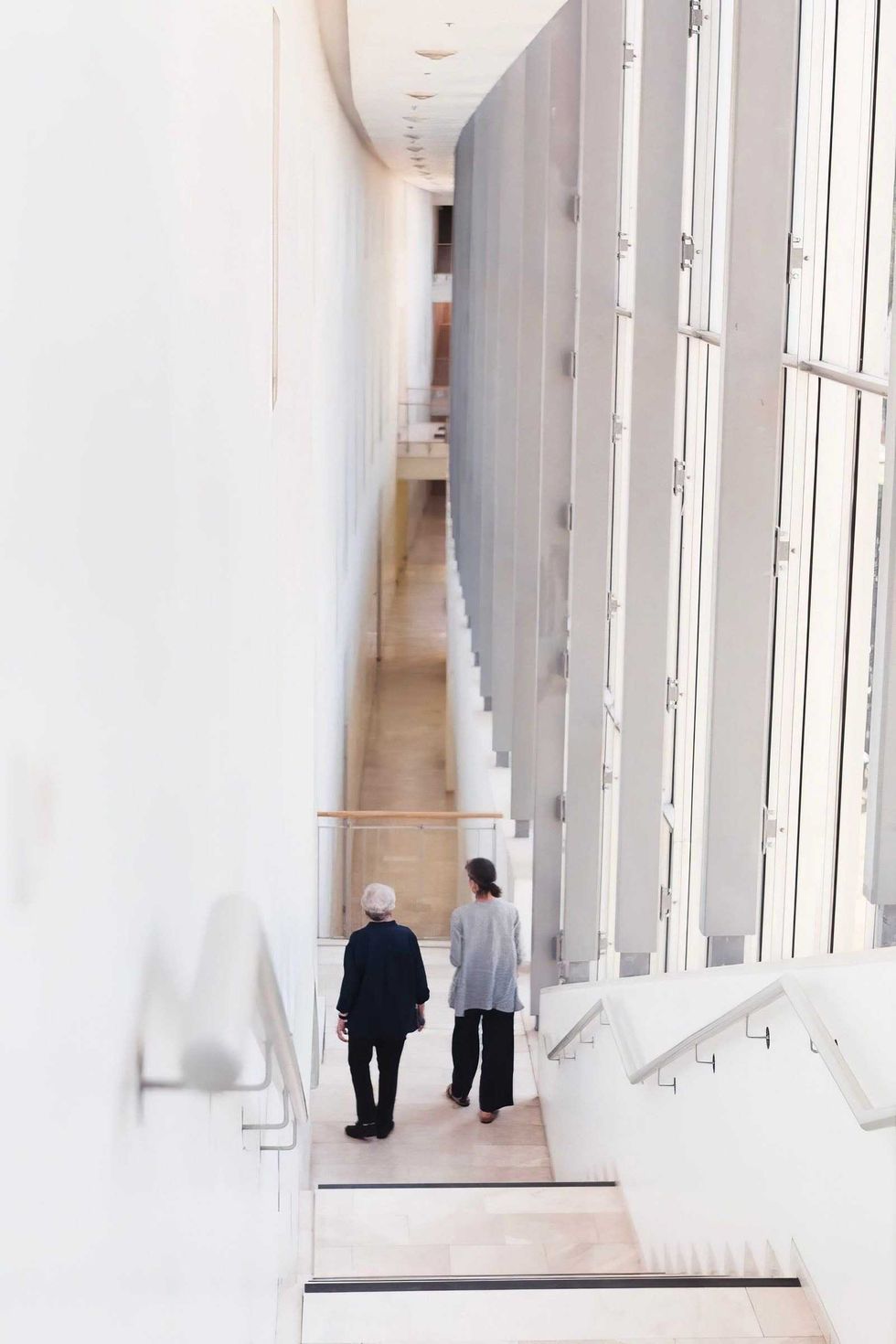
“I think that with one beam of light that falls right, it can change everything,” Melamade says, and we see her buildings — Jerusalem’s Supreme Court building and the Ben Gurion Airport among them —bloom and glow in some of the most breathtaking sequences.
But the film’s heart lies in the sometimes strained relationship between mother and daughter. “How [did] you love me for so many years?” Ada asks her daughter during one interview. “I wasn’t with you.” It’s a cutting message that has special resonance during the holiday season: Where are the lines between work and life, and how do we know when they need to be redrawn?
“Ada: My Mother the Architect” will screen at the Moviehouse in Millerton on Saturday, Dec. 6 at 7 p.m. A Q&A with director Yael Melamede will follow the film. Tickets at themoviehouse.net.
Graham Corrigan is a writer and musician from Philadelphia currently living in Lakeville.
Keep ReadingShow less
Tangled gift guide
Dec 03, 2025
The Orvis Guide hip pack as seen on the Orvis website.
Provided
What do you get the angler that has everything?
You start by realizing there is always something the angler does not have.
Such as a hip pack instead of a vest. After years of lugging around too much stuff in a vest, my back hurt, so I switched to a hip pack from Orvis, which I promptly overstuffed.But getting the weight off my shoulders helped some with the back pain. The pack in question is the Orvis Guide model at $179. The “PRO” version is waterproof, a little bigger and $100 more expensive.
I use a lanyard for tippet, clippers and clamp. There are any number of lanyards on the market. I use one from The Fly Shack at $14.95. I actually use two of these, one set up for trout and one for bass.
For tippet and leaders, I use Bozeman Flyworks. The 55 yard tippet spools in nylon and fluorocarbon start at $5 and have more material than the standard 30 yard spools from bigger outfits. The fluorocarbon is nice and stiff, even at thinner diameters, which I like for droppers. The nylon and fluorocarbonleaders come in packs of five in standard lengths and diameters, starting at $9.50, which is significantly less expensive than the above-mentioned bigger outfits. I change and rebuild leaders constantly, so these savings add up over the course of a season.
For those of you who don’t tie flies, you can pick up the basics inexpensively at The Fly Shack and Big Y Fly Company. For wet flies I recommend Ligas Discount Flies in Boulder, Colorado.Their soft hackle wets work better than anyone else’s, why I don’t know. Plus Wally will call to confirm your order and there’s a good chance you’ll wind up yakking with him for a while, which is both entertaining and instructional.
Also check out Brent Auger’s flies at Dragontail Tenkara. The Utah Killer Bug (12 for $15) and the War Bird flymph ($24 for 12) are very effective flies, especially in a tight-line nymphing rig.
What you should also do is drop in at the fly shop wherever you are and buy some flies made by local tyers, and buy something else for the good of the house. Or, if you’re shopping for someone, get a gift certificate, bearing in mind that fly fishing is hideously expensive and $50 barely flips the meter. Around here that means UpCountry Sportfishing in Pine Meadow, and you can get a gift certificate online.
Books: Pocketguide to Eastern Streams by Thomas Ames is in a new edition ($29.95). This sturdy paperback is loaded with info and photos of the bugs we love, including a few I never heard of and I’ve been around some.
John Gierach died earlier this year, and he was so good at writing about this sport it makes me want to bail out completely and take up macrame instead. Any of his titles would make a good present for your grumpy winterized housebound angler, but I am partial to “Trout Bum” and “Standing in a River Waving a Stick.”
And I still think Taylor Streit’s “Instinctive Fly Fishing”($14.95) is the single best general introduction to the sport. There is something for every angler, from the newbie to the crusty and certifiable (me) in this slender volume.
These books are in print and while Amazon is certainly handy, I urge you to get them through one of our independent bookstores if possible. UpCountry has a good book selection as well.
Keep ReadingShow less
The Souterrain Gallery in West Cornwall bustled with art lovers and artists on Nov. 28 for the opening of “Moon Zappa and Friends: A Multifaceted Exhibit.”
Moon Unit Zappa warmly greeted guests, mingling with visitors as they enjoyed refreshments and settled in to take in the exhibit.
In addition to showcasing work by several artists — including Zappa herself — the event doubled as a book signing, with copies of her memoir Earth to Moon available. Guests could also purchase blind gift boxes — holiday “mystery gifts” selected and wrapped by Zappa.
The show was curated by Zappa. When asked how she chose the artists she said, “I chose people that make my heart sing.” And also, “I wanted all ages to see it and enjoy it. I wanted kids to enjoy it too.
Zappa channels her zest for life with colorful and playful creatures set in their own stylistic world. One of her paintings features a wolf eel. “They are so unattractive, I thought I’d showcase them.” That aesthetic play is also apparent in her installation of fabric-wrapped bricks.
Among the featured artists is Kimmah Dennis, an artist-in-residence at the Silver Arts Project in New York City, who contributed several large-scale mixed-media paintings.
“I’m a material fanatic,” she explained.One painting was on the back of an old mirror on which she painted and scratched her images, as well as using canvas, paints, and bleach on some work to create textures, color, and patterns.A world traveler, she also puts different cultures into her work.
Diva Zappa, sister of Moon, displayed ethereal photographs.Aris Moore exhibited magical and intriguing creatures. Jett Ulysses had small images of flowers and fruit on black backgrounds. Melissa Sorrel offered mysterious depths of detail in her work. Paintings by Eileen Olivieri and Helen Midge Matessi Baudouin completed the works, making for an interesting mix.
Rowan Fields, who came to browse, said, “This show is really cool,” pointing to a constellation of five circular canvases by Dennis.
The show runs through Dec. 31 at the Souterrain Gallery (below the Wish House), at 413 Sharon Goshen Turnpike, West Cornwall.Hours are Thursday through Sunday, 11 a.m. to 5 p.m.
Keep ReadingShow less
loading



